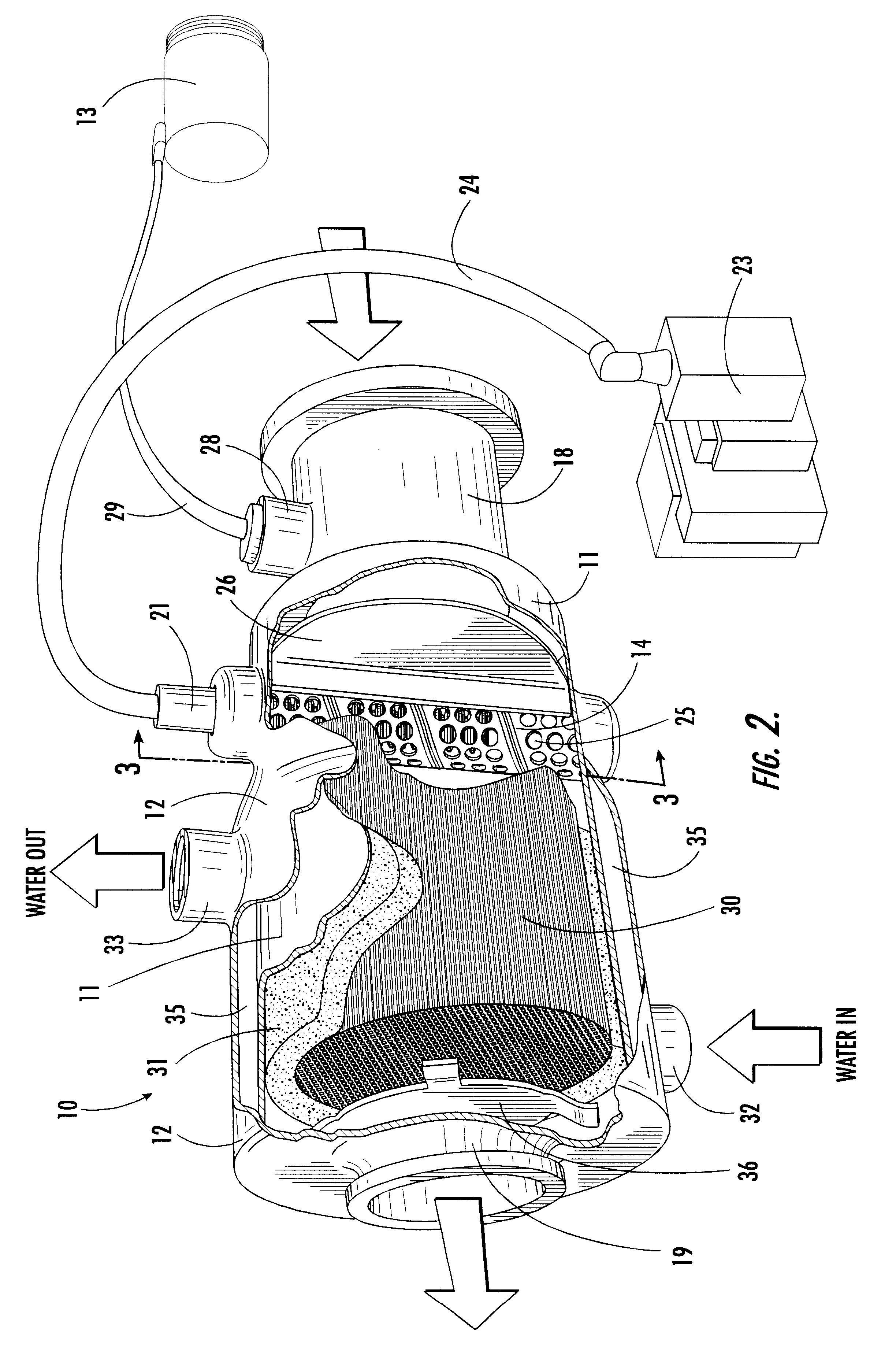Emission control system for generator engine
a technology of emission control system and generator engine, which is applied in the direction of machines/engines, mechanical equipment, separation processes, etc., can solve the problems of insufficient attention to the challenges, the exhaust emission of the internal combustion engine, and the life-threatening situation that makes effective pollution control of the marine generator engine critical, so as to reduce the concentration of pollutants and resist overheating
- Summary
- Abstract
- Description
- Claims
- Application Information
AI Technical Summary
Benefits of technology
Problems solved by technology
Method used
Image
Examples
Embodiment Construction
Referring now specifically to the drawings, a preferred embodiment of the emission control system according to the present invention is illustrated in FIG. 1, and shown generally at reference numeral 10. As can be seen in FIG. 2, the emission control system 10 comprises a treatment chamber 11 positioned within a manifold 12, and an air pump 13. A metal tube 14 containing an electrode 15, and a porous chemical substrate 16 are positioned within the treatment chamber 11 to promote a chemical reaction that reduces the concentration of pollutants in the gaseous emissions of a conventional marine electric generator engine 17, shown in FIG. 8.
As shown in FIG. 1, the treatment chamber 11 is a hollow cylinder, preferably made of 316 L stainless steel. The treatment chamber 11 includes an intake pipe 18 and an exhaust pipe 19 located at opposite lateral ends of the treatment chamber 11 that define openings through which a stream of gaseous emissions enters and exits the treatment chamber 11,...
PUM
 Login to View More
Login to View More Abstract
Description
Claims
Application Information
 Login to View More
Login to View More - R&D
- Intellectual Property
- Life Sciences
- Materials
- Tech Scout
- Unparalleled Data Quality
- Higher Quality Content
- 60% Fewer Hallucinations
Browse by: Latest US Patents, China's latest patents, Technical Efficacy Thesaurus, Application Domain, Technology Topic, Popular Technical Reports.
© 2025 PatSnap. All rights reserved.Legal|Privacy policy|Modern Slavery Act Transparency Statement|Sitemap|About US| Contact US: help@patsnap.com



